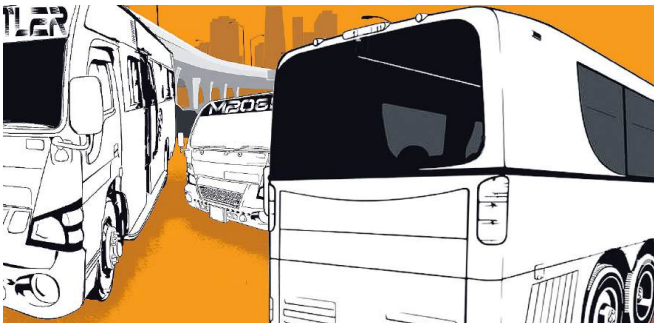
 THE
THE
I remember when Nairobi had a functional public transport system. As a child, I lived first in Milimani and attended State House Primary.
In those early years, my school commute was simple—I walked. No matatus, no boda bodas, just the steady rhythm of my footsteps on the pavement.
Later, when we moved to Adams Arcade and later to Nairobi Dam and Uhuru Gardens estates, my school commute changed. I now had to rely on public transport, and I can confidently say—it worked.
The Kenya Bus Service was efficient. There was a bus every 15 minutes, and I could reliably board at Adams Arcade, Nairobi Dam, or Uhuru Gardens, knowing I’d get to school on time.
My drop-off point was Serena, from where I would walk the rest of the way to State House Primary. In the afternoons, I repeated the same journey back home.
The buses were affordable, safe, and ran on a predictable schedule— three words that sound foreign when describing Nairobi’s transport today.
Fast forward to the present, and I recently found myself in Dubai, a city that has taken public transport planning to another level. I used the Dubai Metro, a system so efficient that you don’t even need to check schedules—you just show up, and a train will be there in minutes.
But what struck me most wasn’t just the trains. I walked. A lot. If you walk from the Dubai Metro to Dubai Mall, you cover about a 7 km round trip.
And here’s the thing—I didn’t mind it. The infrastructure made walking seamless. Wide, shaded walkways connected metro stations to key locations, making pedestrian movement natural and safe.
Now, contrast this with Nairobi—a city with near-perfect walking weather yet almost zero walkability. Sidewalks are narrow or nonexistent, pedestrian crossings are death traps, and anyone who dares to walk is often seen as either poor or unfortunate.
It begs the question—why did Kenya Bus Service work in my childhood, but today, millions of Nairobians are trapped in an unpredictable, chaotic system that forces them into gridlocked roads? The answer is simple: We stopped treating public transport as a public good.
When public transport is efficient, people naturally walk more. Studies show that public transit users walk an average of 19 minutes a day—enough to meet the minimum recommended levels of physical activity (American Journal of Preventive Medicine).
Think about the Dubai Metro again. Walking from the station to your destination is built into the system. In contrast, Nairobi’s transport infrastructure actively discourages walking, fuelling obesity, diabetes, and heart disease.
Nairobi’s air pollution levels are rising dangerously. A study in Environmental Science & Technology found that increasing public transport use can cut urban air pollution by 45 per cent, significantly reducing cases of asthma, lung infections, and even some cancers.
Back in the days of KBS, we didn’t have millions of exhaust-spewing private cars clogging the roads. If we return to a well-structured public transport model, we won’t just decongest the city— we will literally breathe easier.
Kenya loses between 3,000 and 4,000 lives every year to road accidents, many of which involve private cars and motorcycles.
Public transit is significantly safer. Research from the National Highway Traffic Safety Administration shows that public transport users are 10 times less likely to be involved in fatal accidents than private car users.
As a surgeon, I have seen the human cost of poor transport planning in my operating room. Too many trauma patients would not be there if we had a safer, well-regulated public transport system.
Back in my childhood, when I took KBS, I was not stressed about whether I’d make it to school on time or whether I’d be harassed by an unruly conductor. Today, Nairobi’s transport system is a daily stressor for millions.
A study in Preventive Medicine found that long commutes increase stress, anxiety, and depression. A well-planned transport system isn’t just about movement—it’s about mental well-being.
Dubai, Singapore, and Bogotá invested in mass transit and reaped the benefits. But we don’t have to look that far— Kenya Bus Service worked in the past. Instead of pouring billions into more highways that only encourage more cars, we should be reviving mass transit, with predictable bus schedules, expanding pedestrian infrastructure to encourage safe walking and lastly integrating transport planning with environmental and health policies.
Dr Nicholas Okumu is an
orthopaedic surgeon and a
2024 Global Surgery Advocacy Fellow








